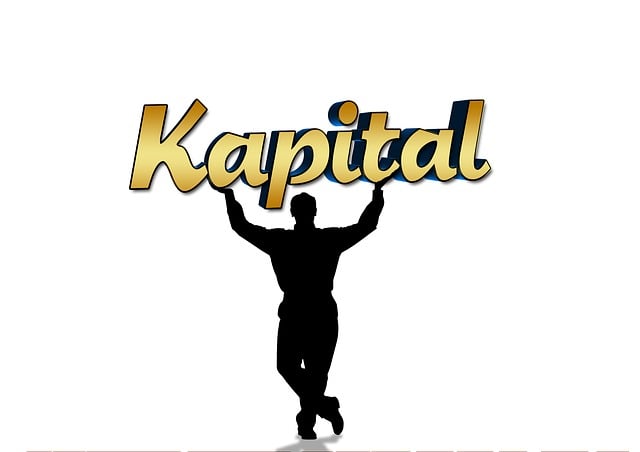Debt Restructuring vs Debt Review: Navigating South African Financial Obligations
South Africans facing debt challenges must understand two distinct strategies: debt restructuring and debt review. Debt restructuring takes a comprehensive approach by renegotiating loan terms (lower interest rates, extended periods) to improve cash flow, ideal for substantial debts with stable income. Debt review, on the other hand, focuses on evaluating existing debt obligations, budgeting, and creating tailored repayment plans based on individual circumstances, empowering long-term financial control. While debt restructuring offers immediate relief, debt review provides a more sustainable path to financial stability through targeted spending adjustments.
In the face of mounting debt, South Africans often grapple with crucial decisions. This article delves into the nuances of two key strategies: Debt Restructuring and Debt Review. Understanding these concepts is essential for navigating financial challenges effectively. We provide a comprehensive overview, highlighting how each approach differs and benefits South African individuals. From practical steps to consider to the key factors at play, this guide equips you with knowledge to make informed choices between restructuring and reviewing your debt.
- Understanding Debt Restructuring: A Comprehensive Overview
- The Role of Debt Review in Financial Management
- Key Differences Between Restructuring and Review
- Benefits and Considerations for South Africans
- Practical Steps to Navigate Your Debt Options
Understanding Debt Restructuring: A Comprehensive Overview

Debt restructuring is a strategic process that involves reorganizing an individual’s or business’s existing debt obligations to improve cash flow and overall financial stability. It’s not about reducing the amount of debt but rather altering the terms and conditions attached to it. This can include adjusting interest rates, repayment periods, or even consolidating multiple debts into one manageable loan. For South Africans navigating a challenging economic climate, understanding this concept is crucial when comparing it to debt review options.
When considering debt restructuring, individuals or businesses often work with lenders or financial advisors to create a new agreement that better aligns with their current financial capabilities. This approach can be particularly beneficial for those burdened by high-interest rates or complex loan structures. Unlike debt review, which primarily focuses on negotiating lower interest rates and fees, debt restructuring offers a more comprehensive solution by addressing the underlying structure of the debt, providing long-term relief and potentially avoiding harsh consequences of non-payment.
The Role of Debt Review in Financial Management

Debt review plays a crucial role in financial management for South Africans, offering an alternative approach to dealing with debt compared to restructuring. While debt restructuring involves changing the terms of your existing loans, such as lowering interest rates or extending repayment periods, debt review focuses on evaluating and managing current debt obligations more effectively. It’s a process that helps individuals gain clarity about their financial situation by assessing their income, expenses, and debt levels. This proactive step is particularly beneficial for those struggling with debt but not necessarily eligible for restructuring due to creditworthiness criteria.
Through debt review, South Africans can negotiate with creditors to reach agreements on repayment plans that align better with their financial capabilities. It’s a strategic way to manage debt without significantly altering the original loan terms. This process empowers individuals to take control of their finances, avoid defaulting, and work towards building creditworthiness over time. In essence, debt review is about finding a more sustainable path to financial stability, especially when compared to the more drastic changes involved in debt restructuring.
Key Differences Between Restructuring and Review

When it comes to managing debt, South Africans often come across terms like debt restructuring and debt review. While both aim to alleviate financial burdens, they have distinct approaches and outcomes.
The key difference lies in their focus: debt restructuring involves a comprehensive overhaul of the existing debt agreement, potentially changing interest rates, repayment terms, and even the lender. This is suitable for significant debt amounts where a complete strategy is needed. In contrast, debt review is a more targeted process, examining specific aspects of your debt, like identifying errors or negotiating better terms with current lenders. It’s ideal for those looking to optimize their existing debt arrangements without major changes.
Benefits and Considerations for South Africans

For South Africans grappling with debt, understanding the nuances between debt restructuring and debt review is essential. While both options aim to alleviate financial strain, they offer distinct approaches. Debt restructuring involves renegotiating the terms of your existing debt, often leading to lower interest rates, extended repayment periods, or a combination of both. This strategy provides immediate relief by reducing monthly payments and potentially lowering overall interest paid over time. It’s particularly beneficial for those with substantial debts and stable income streams, as it allows for more manageable repayments without significantly impacting daily expenses.
However, debt restructuring may not always be suitable for everyone. It requires a solid financial plan to ensure successful implementation. On the other hand, debt review focuses on evaluating your financial situation, budgeting habits, and exploring alternative solutions. This process can help individuals gain control of their finances, identify unnecessary spending, and create a sustainable repayment strategy. While it may not offer immediate relief like restructuring, debt review is valuable for building long-term financial literacy and discipline, ultimately empowering South Africans to better manage their money and avoid future debt crises.
Practical Steps to Navigate Your Debt Options

Navigating your debt options is a crucial step in managing your financial health, especially with the various solutions available like debt restructuring and debt review. The first practical step is to understand the difference between these two approaches. Debt restructuring involves renegotiating the terms of your existing debts, typically by extending repayment periods or lowering interest rates. This method offers a long-term solution for managing debt but might not always be feasible depending on your lender.
On the other hand, debt review is a process that assesses your financial situation to create a manageable repayment plan tailored to your income and expenses. It’s a more immediate relief strategy, helping you breathe easier in the short term while still aiming for long-term debt elimination. Once you’ve chosen the suitable option, work closely with your lender or a financial advisor to outline a clear strategy, set realistic goals, and stick to a strict repayment plan to regain control over your finances.
When navigating the complex landscape of debt management, understanding the nuances between Debt Restructuring and Debt Review is crucial for South Africans. While both offer paths to financial relief, Debt Restructuring involves renegotiating terms with creditors, often leading to lower interest rates and extended repayment periods. Conversely, Debt Review provides a thorough assessment of your financial situation, offering advice tailored to your circumstances. Knowing the key differences and benefits specific to South Africa empowers individuals to make informed decisions, ultimately selecting the optimal strategy for their unique financial journey.







